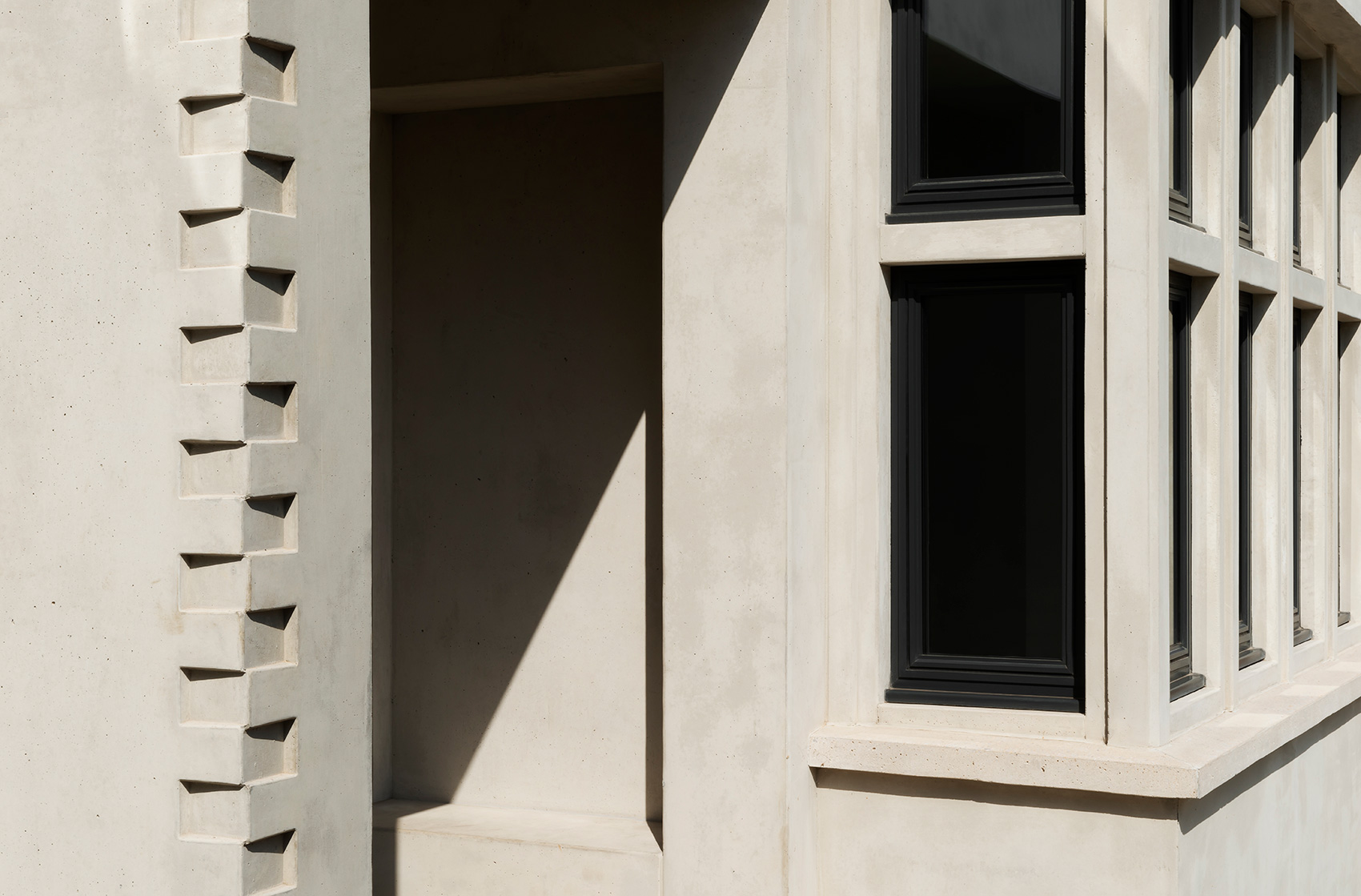Bureau de Change explores a contemporary take on 1930s suburbia at Cast House in Clapham, south London.
Words
Kiranmmayie Suryanarayana
Photos
Gilbert McCarragher
Located on a suburban street in Clapham, Cast House is a newly constructed detached house inspired by the contemporary style of London’s suburbs but distinct in its proposition. East London based firm Bureau de Change extended the visual language of the pattern-book brick houses of the 1930s. Precast concrete details reinterpret the contextual motifs of the local 1930s architectural language. Gable roofs, bay windows, hybrid materials, and open porch entrances are common design traits in this neighbourhood. Cast House fuses these motifs creating a composition of London’s stock brick and precast concrete, with bay windows and a recessed entrance porch.
The entrance elevation is sensitive to the neighbourhood’s heritage, responding to the playful rhythm of the streetscape. Meanwhile, the rear façade is bolder, consisting of a cascading sequence of tiered cubic volumes that protrude into the re-landscaped garden and a sunken patio. Both elevations use a sparing palette of materials, consisting of brick and concrete joinery. The stepped rear elevation creates private terraces overlooking the garden, with generous glazing admitting ample natural light.
Designed well within the footprint and height parameters of the original building, the 420-metre square four-storey house includes one level below ground and a fifth bedroom as an attic room with a dormer window.
The use of precast panels containing a high content of ground granulated blast-furnace slag (GGBS), a cement substitute, helps reduce the amount of embodied CO2 and emulates the lasting quality and craftsmanship of the whitewashed concrete aesthetic of the 1930s. Concrete on the rear elevation has a softer, variegated texture achieved through the use of additional moulds.
Framed lintels emphasize the craftsmanship of the building. The edged interlocking brick corners create a rhythmic pattern along the vertical edges of the street elevation. The pattern is echoed in the concrete ground floor, where the corners of the building have been moulded to create a pattern that inverts the rhythm of the expressed interlocking brickwork above.
Inside, an azure blue suspended stair contrasts with the monochrome fitout. A concrete stair flanked with cubic planters leads from the lower ground floor to the garden above.
Passive cooling techniques include two air source heat pumps (ASHP) and a mechanical ventilation heat recovery system (MVHR).
Additional Images
Credits
Architect
Bureau de Change
Contractor
PRS Builders
Structural Engineer
Blue Engineering
M&E Engineer
MWL Consulting
Source: Architecture Today





